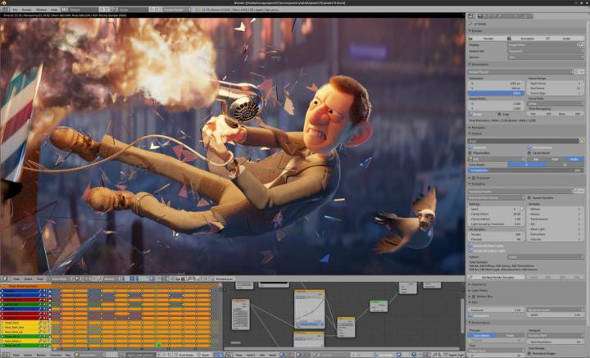Creating engaging and dynamic presentations has become essential in education, business, and marketing. While PowerPoint remains a staple for many, it has limitations when it comes to animation and interactive content. For those seeking more flexibility and creative control, exploring alternatives to PowerPoint is a wise choice. Several tools offer enhanced animation features, intuitive design interfaces, and impressive visual outputs that make them standout options in today’s presentation landscape.
Top Alternatives to PowerPoint for Creating Animations
1. Prezi
Prezi takes a non-linear approach to presentations, allowing users to zoom in and out of the canvas rather than flipping through slides. This dynamic navigation creates a storytelling effect that keeps audiences engaged. Prezi’s animated transitions and movement-based approach make it ideal for presenting complex topics in an interactive way.
Its interface is user-friendly, and the platform offers numerous templates that cater to corporate, educational, and creative needs. What sets Prezi apart is its ability to integrate live video with animated content, a feature unique among presentation tools.
[ai-img]prezi, animation, presentation, zoom[/ai-img]2. Powtoon
Powtoon is a cloud-based platform designed specifically for creating animated videos and presentations. Used widely in marketing and education, Powtoon allows users to create professional animations with ease, using drag-and-drop elements.
The tool comes with ready-made scenes, characters, and props to streamline the animation process. Users can add voiceovers and music, making it a versatile tool for explainer videos and product demos. Unlike PowerPoint, Powtoon emphasizes animation from the ground up, rather than merely enhancing static slides.
3. Google Slides with Add-ons
Google Slides by itself offers limited animation features, but when combined with third-party add-ons like “Slides Carnival” and “Pear Deck”, it becomes a more engaging, collaborative platform. Though not as robust in animation functionality as Powtoon or Prezi, it is ideal for teams working remotely due to its cloud-native environment.
With integrations such as Animations for Slides, users can animate text and objects more fluidly, offering a more refined visual effect than basic PowerPoint transitions.
4. Vyond
If the goal is to produce professional-grade animated videos, Vyond is an excellent alternative. Catering to businesses and educators, Vyond specializes in character-driven animations that can be customized for different scenarios. It offers storyboard-based tools that enable intricate animations without the need for prior design experience.
Vyond’s drag-and-drop interface and vast library of templates and assets make it a reliable option for those seeking to build narrative animations rather than traditional slide decks.
[ai-img]vyond, character animation, video presentation[/ai-img]5. Canva
Canva has evolved significantly to include animation functionality along with its well-known design features. With its simple interface, Canva now allows users to add motion to text, images, and icons. The platform supports exporting presentations as videos or animated GIFs, which makes it ideal for social media and digital marketing use cases.
Though not as elaborate in animation options as Vyond or Powtoon, Canva strikes a balance between design simplicity and animation capabilities, making it perfect for beginners or non-designers.
6. Adobe After Effects
For those looking for full creative freedom, Adobe After Effects is the industry-standard tool for motion graphics and visual effects. While it has a steep learning curve, it provides unmatched capabilities for intricate animations, transitions, and effects.
It is ideal for advanced users involved in professional video production or those aiming to produce cinematic-level presentations. After Effects is overkill for traditional slideshows but perfect for high-impact animated visuals.
Conclusion
While PowerPoint remains a go-to for general presentations, these alternatives offer specialized features tailored for modern animation needs. Whether it’s Prezi for storytelling, Powtoon for animated videos, or Vyond for character-based narratives, each platform has unique strengths. Choosing the right tool depends on the intended use—educational, corporate, or marketing—and the user’s comfort with design tools.
Frequently Asked Questions
-
Q: Which tool is best for beginners wanting to create animated presentations?
A: Canva and Powtoon are excellent starting points due to their intuitive interfaces and prebuilt templates. -
Q: Can these tools replace PowerPoint completely?
A: Yes, depending on the presentation context. For animation-focused content, these tools surpass PowerPoint in terms of capabilities and visual engagement. -
Q: Are there free versions of these tools?
A: Most offer free plans with limited features, including Prezi, Powtoon, and Canva. For advanced capabilities, premium plans are recommended. -
Q: What if I need to collaborate with a team?
A: Google Slides and Canva both support real-time collaboration, making them ideal for group projects. -
Q: Which tool is best for professional video presentations?
A: Vyond and Adobe After Effects are preferred for high-quality, professional video animations.






